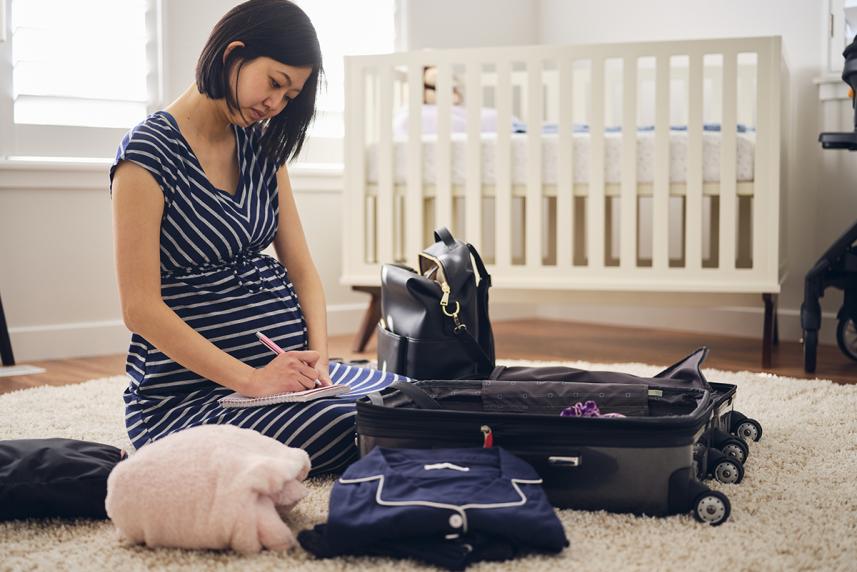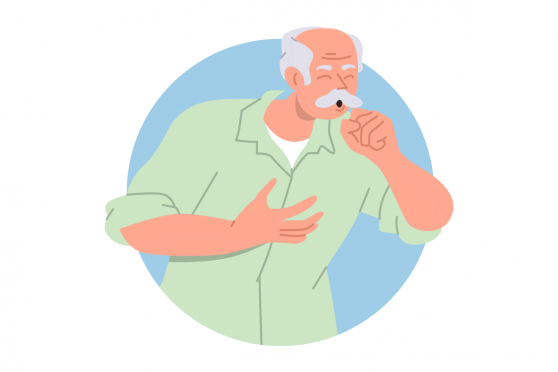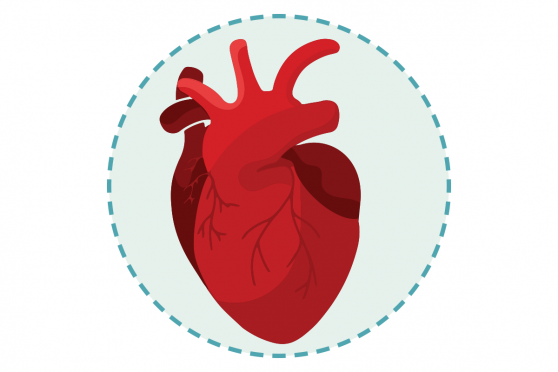How to pack the perfect hospital bag
Here’s what you (and your partner) should bring for the big day.

You’ve stocked the nursery with baby books, spent hours putting together a changing table, and agonized over your baby’s going-home-outfit—but now it’s time to focus on you.
Starting around week 36 or 37 of your pregnancy, it’s a good idea to pack up your “go-bag”—i.e., the bag (or suitcase) of supplies you’ll need for your stay at the hospital, says Meagan Haynes, MD, MPH, an obstetrician-gynecologist at Yale New Haven Hospital in New Haven, Connecticut.
While there’s no way to know how long you’ll be in labor—and how that labor will go—most women end up staying in the hospital for about two to three days after giving birth, she says.
“On average, first-time moms will be in labor for about 24 hours,” says Haynes. “Once they have the baby, most women who’ve had a vaginal birth go home two days after delivery and three days after a C-section.”
What to pack: Mom’s bag
You’ll most likely only need supplies for one day of labor and two days of recovery, so no need to go overboard. “Many women end up overpacking,” says Haynes. (Remember: You’re going to a hospital, so it’s likely that the staff will have essentials on hand.)
- ID and insurance card: Your hospital will likely require a photo ID when you check in. It’s also a good idea to keep your insurance card on hand.
- Birth plan: You’ve probably filled out an online version of your birth plan, but you may want to keep a paper copy on hand in case your doctors and nurses need to refer to it.
- Socks: Even if you’re sweating during labor, your feet may still feel cold.
- Lip balm: Your lips might get dry during the pushing stage of labor.
- Hairbands or elastic ties: These are essentials for keeping hair off your face while in labor.
- Slippers: A comfortable pair of slippers can come in handy in case you find yourself pacing around the delivery room during labor. You can also wear them later in the recovery room. “Many women’s feet get even more swollen after birth even than they were prior to birth,” says Haynes.
- Comfort items: “Birthing is something that’s hard to plan around, but if there are certain items that will help a woman make her experience more individualized and empowered in a way that she envisions it, I would encourage her to bring them,” says Haynes.
Some popular items include aromatherapy, massage oils, electric candles (to minimize the glare from the big hospital lights), and a small speaker to play music.
- Bathrobe: A bathrobe is easy to slip on and off during labor and nursing sessions after delivery if your milk comes in and you plan to breastfeed.
- Post-partum underwear: After giving birth, your uterus will start to shed blood and tissue, called lochia. While the hospital will provide you with mesh disposable underwear, you may want to bring a few comfortable pairs of your own.
- Nursing bra: It’s helpful to have a nursing bra on hand if your milk comes in while you’re in the hospital and you plan to breastfeed, says Haynes. The hospital will provide you with a breast pump, but if you want a lactation consultant to show you how to use one that you’ve already selected, you can bring that along, too.
- A full-sized towel: Hospital towels tend to be small. For more privacy, consider bringing your own full-sized one.
- A going-home outfit: Don’t ditch your maternity dresses just yet. It takes about 6 weeks for your uterus to shrink back to its pre-pregnancy size, so you’ll likely still be sporting that cute bump for a little while longer.
And remember: “It takes nine months for your body to develop into the ability to give birth to a healthy baby,” says Haynes. “It can take an equal amount of time to get back to your pre-pregnant state.” Plus, if you’ve had a C-section, wearing tight-fitting or high-rise clothing can rub against the area and irritate the incisions.
- Toiletries: The hospital will give you basic toiletries like shampoo, toothbrushes, and toothpaste, but if your favorite lotion or conditioner will make you feel more comfortable, it never hurts to bring it along.
- A pillow: If a pillow takes up too much space in your hospital bag, you can always stash it in the car and send your partner to retrieve it later.
- A phone charger: The last thing you need is for your cell phone to run out of batteries during your hospital stay.
- Entertainment: If your labor is on the lengthier side (say, you’re being induced), you might want to watch a movie or flip through a magazine between contractions.
- An extra bag: Hospitals are happy to give away personal care items like maxi pads, ice packs, and peri-care products like witch hazel wipes (which can ease the pain from a tear), says Haynes. “I tell all my patients to figure out what works for you in the hospital and take all the extra supplies home with you,” she says.
What to pack: for Mom’s partner
Haynes recommends packing for the hospital as if you were planning for a two-day stay at a hotel.
- ID: The hospital will likely require a photo ID when you check in.
- A pillow: Since you’ll likely be camping out on a couch, or even just a chair, you’ll want to make yourself as comfortable as possible.
- Phone charger: Tasked with taking photos? Don’t forget your phone charger.
- PJs: Plan on spending one to two nights in the hospital, depending on whether your partner has a vaginal delivery or a C-section.
- An extra outfit and a few pairs of underwear: You’ll probably need two outfits, which should cover you during a two- or three-day stay in the hospital.
- A full-sized towel: Hospital towels can be on the smaller side, so you’ll want to bring your own for the shower.
- Support items for partner: Whether it’s massage oils, games, or a laptop stocked with movies, make sure you have everything you need to keep Mom distracted (and as comfortable as possible) during labor.
What to pack: for baby
The good news is that hospitals are stocked with the essential baby care items—formula, diapers, receiving blankets—so for now, you won’t need to tote around a suitcase full of items for your little one.
- A warm going home outfit: Whether you choose a dress, a onesie, or pair of pants and a shirt, you’ll want to make sure that your little one stays nice and warm during the ride home. “In general, babies need to wear one more layer of clothing than an adult,” says Haynes.
- Car seat: This is perhaps the most important item you can bring to the hospital. Check out these tips on purchasing the best car seat possible.
- A pacifier: In general, hospitals aren’t encouraged to give out pacifiers, so if you plan to introduce one to your baby early on, you may need to bring your own.



